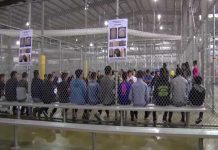
The USDA is making a major change to eliminate processing fees for low-income families benefiting from free or reduced school lunches, starting in the 2027-2028 school year. But what exactly does this mean for the families affected?
At a Glance
- The elimination of processing fees for low-income families starts 2027-2028.
- Current processing fees significantly raise costs for families.
- The USDA’s policy targets families earning up to 185% of federal poverty guidelines.
- Agriculture Secretary Tom Vilsack emphasizes healthy meals at no cost.
USDA Policy Implementation
The U.S. Department of Agriculture announced the new rule to eliminate processing fees for students eligible for free or reduced-price school meals. Starting with the 2027-2028 school year, these families will no longer face the financial burden of fees added by cashless payment systems used by school districts. Presently, these fees are a significant cost, sometimes amounting to $3.25 per transaction or 4% to 5% per payment.
Families eligible for these programs find themselves paying as much as 60 cents per dollar when paying electronically, despite their already strained financial resources. The USDA aims to lower costs for families earning under 185% of federal poverty guidelines, equating to $57,720 for a family of four.
USDA bans school lunch fees for low-income families https://t.co/FcmggKJppg
— The Associated Press (@AP) November 5, 2024
Addressing Financial Burden
The Consumer Financial Protection Bureau (CFPB) reviewed the financial strain caused by cashless payment processing fees, which cost families over $100 million annually. The review found that 87% of the largest U.S. public school districts contract with payment processors, incurring average fees of $2.37 or 4.4% per transaction. The market’s dominance by three companies—MySchoolBucks, SchoolCafe, and LINQ Connect—limits options for families and competition for the school districts.
“USDA and schools across America share the common goal of nourishing schoolchildren and giving them the fuel they need to learn, grow and thrive,” said Agriculture Secretary Tom Vilsack.
For families in rural areas, such as those in South Carolina, the prospect of $3.25 per transaction adds up. As Joanna Roa, a library specialist, noted, “It’s just massively inconvenient,” reflecting the sentiments of many families who need to make frequent smaller transactions because larger sums are not feasible.
Moving Forward
The USDA’s decision marks a significant step towards minimizing additional financial burdens on low-income families, ensuring that all children have access to necessary nutrition for their learning and development without added costs. Agriculture Secretary Vilsack highlighted the broader goal of providing every child with access to healthy school meals at no cost, working toward equity for all students.
This policy change encourages school districts to transition their systems early, preparing for the new cost structure designed to alleviate financial pressures and promote a healthy learning environment.
Sources
- USDA ban on school lunch fees for low-income families begins in 2027
- USDA bans school lunch fees for low-income families
- USDA sets rule prohibiting processing fees on school lunches for low-income families

















